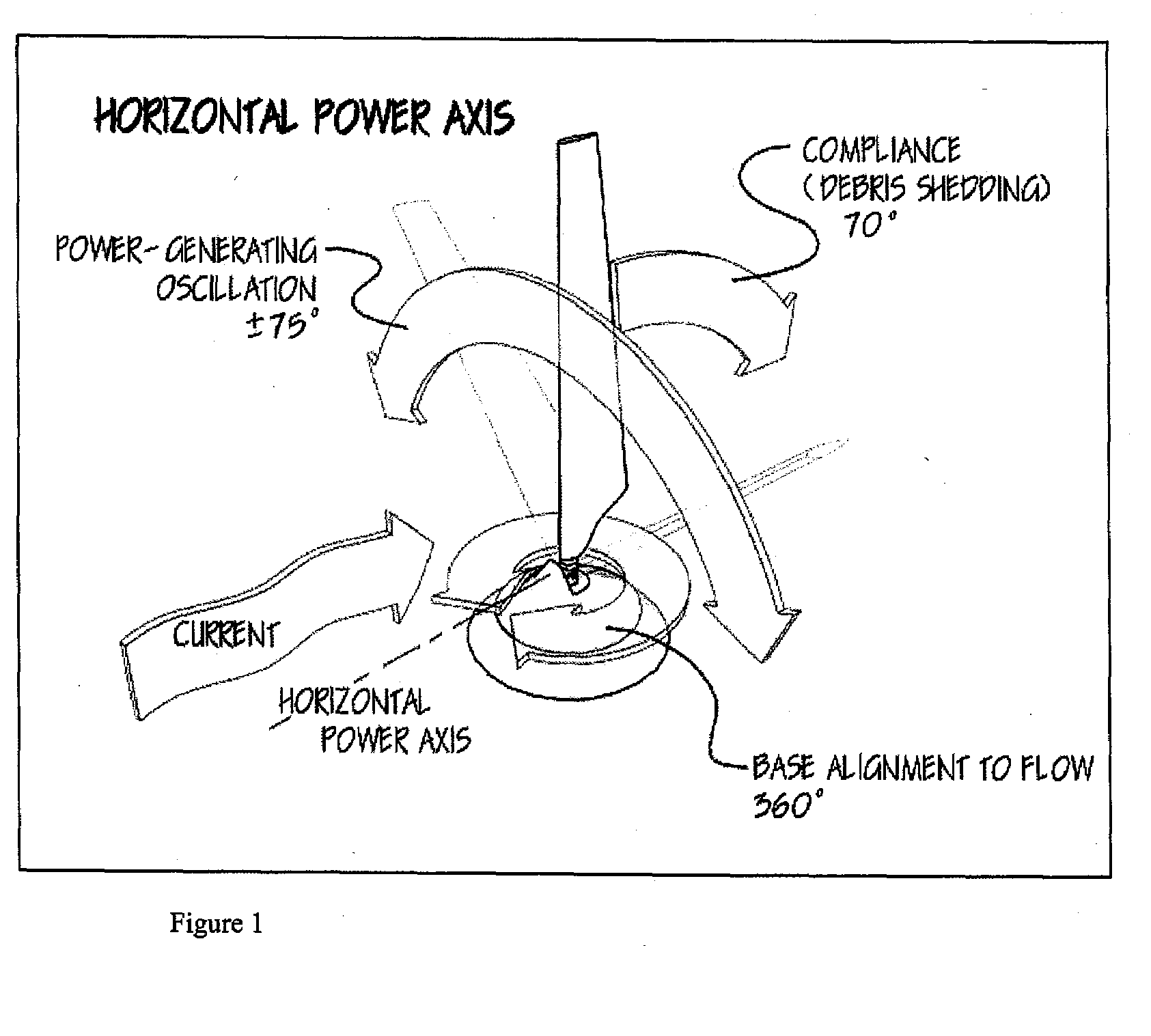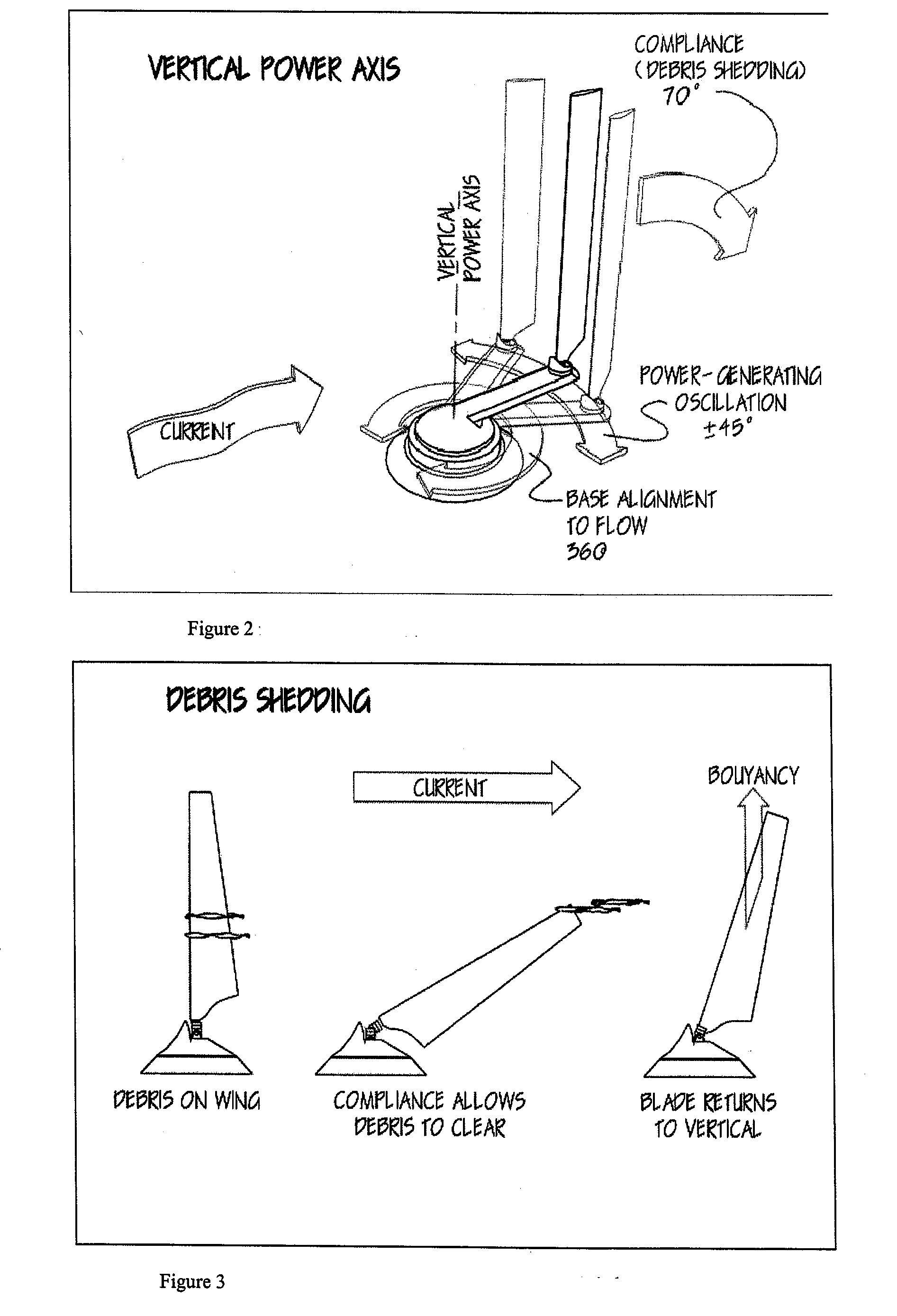Buoyant blade free stream tidal power device
a technology of tidal power and buoyant blades, applied in the direction of electric generator control, couplings, fluid couplings, etc., can solve the problems of destroying native ecosystems, difficult to design a turbine to be efficient or even effective in such a variable environment, and difficult to efficiently extract power. , to achieve the effect of safe unloading
- Summary
- Abstract
- Description
- Claims
- Application Information
AI Technical Summary
Benefits of technology
Problems solved by technology
Method used
Image
Examples
embodiment 1
Horizontal Power Axis Parallel to Flow Stream
[0021]In its first form, shown in FIG. 1, the new system is a single blade or wing that projects upward from a base or foundation on or in the sea floor. The blade is oriented to the prevailing current flow, and its pitch is controlled to make the blade swing to and fro across the current. Power is extracted by resisting the torque created by the blade where it attaches to the base.
[0022]A key feature of the new system is that the blade is buoyant and is mounted compliantly in the current-flow axis. Kelp or debris that entangles the blade will increase drag on the blade, causing it to lean back until the debris clears itself (FIG. 3). The blade will also lean back in very high-current events, unloading the blade and preventing structural damage. In addition, the loads on the system's base or foundation are greatly reduced since buoyancy keeps the blade in the current stream, not a force imposed through the foundation. Variable-buoyancy c...
embodiment 2
Vertical Power Axis at Right Angles to Flow Stream
[0027]Placing the power axis vertically, normal to the current flow, and having the vertical blade oscillate in an arc behind and around the power axis creates interesting opportunities worth investigating (FIG. 2). The blade will still shed debris and excess load though the same buoyancy / passive hinge approach, but the blade can now be constant cross section. The angle of attack is constant, so provisions are not required to twist the blade. The anchor / base needs to be tall enough to get most of the blade out of the seafloor boundary layer, but the loads on the base will be limited to reacting the torque and keeping the entire system from washing downstream. The blade will keep itself vertical using its buoyancy. The orientation axis will now be either the same as or parallel to the power axis. The arm will sweep through approximately 90-110 degrees.
[0028]This configuration is similar to the BioPower Systems bioSTREAM approach, but...
PUM
 Login to View More
Login to View More Abstract
Description
Claims
Application Information
 Login to View More
Login to View More - R&D
- Intellectual Property
- Life Sciences
- Materials
- Tech Scout
- Unparalleled Data Quality
- Higher Quality Content
- 60% Fewer Hallucinations
Browse by: Latest US Patents, China's latest patents, Technical Efficacy Thesaurus, Application Domain, Technology Topic, Popular Technical Reports.
© 2025 PatSnap. All rights reserved.Legal|Privacy policy|Modern Slavery Act Transparency Statement|Sitemap|About US| Contact US: help@patsnap.com



